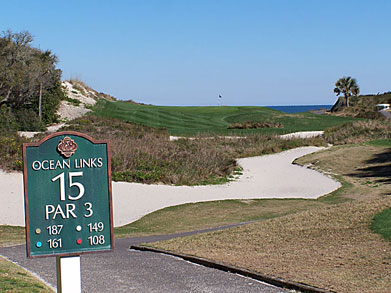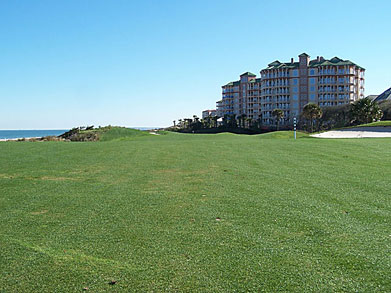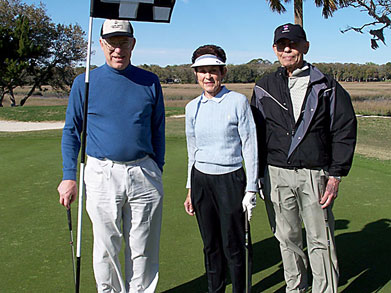"Jeez," was my first impression when I looked at the scorecard for the Ocean Links course and saw it played just 6,100 yards from the tips (and had six par 3s). "Where are the windmills and the clown's mouth?"
Then I played this fine par 70 Bobby Weed layout at Amelia Island Plantation in Florida and learned there is nothing mini about it.
Weed was given a piece of land not unlike what Pete Dye enjoyed at the famed Ocean Course at Kiawah Island. Dye, however, had nothing but ocean and sky framing his layout; a few of the ocean holes on Weed's course are draped with hulking condominium buildings, some seven stories high. The off-ocean holes are lined with houses, set back in most cases at a safe reserve, but a few are definitely in the danger zone.
Keep your blinders on and focus on the shots before you, and you will enjoy a terrific round. Most memorable is the 15th, a lovely terror that emerges from the beautiful live oaks and runs downhill 187 yards to a green surrounded by sand dunes and backed by the blue Atlantic ocean. It is perhaps the only hole on the course where even your peripheral vision does not capture any manmade structures. My playing partner, also a first timer at the Ocean Links, emitted a "Whoa" when we came up to the tee. This was one of the rare moments of crosswinds during the round, and we both wound up short right, much preferable to left where recovering from the dunes would have been next to impossible.
At the 6,100 yards, the course rating is 69.3 and the slope a modest 128. We found it tougher than that. We will have more to say about Ocean Links and its companion course, the Pete Dye designed Oak Marsh, as well as Amelia's members-only club, Long Point, in coming weeks.
After the tough and beautiful par 3 15th, the tee ball on 16 must thread the needle between the dunes. Hundreds of people could potentially bear witness to your approach shot, a tricky downhiller to a green partially obscured and backed by nasty thick grasses and sand.


























